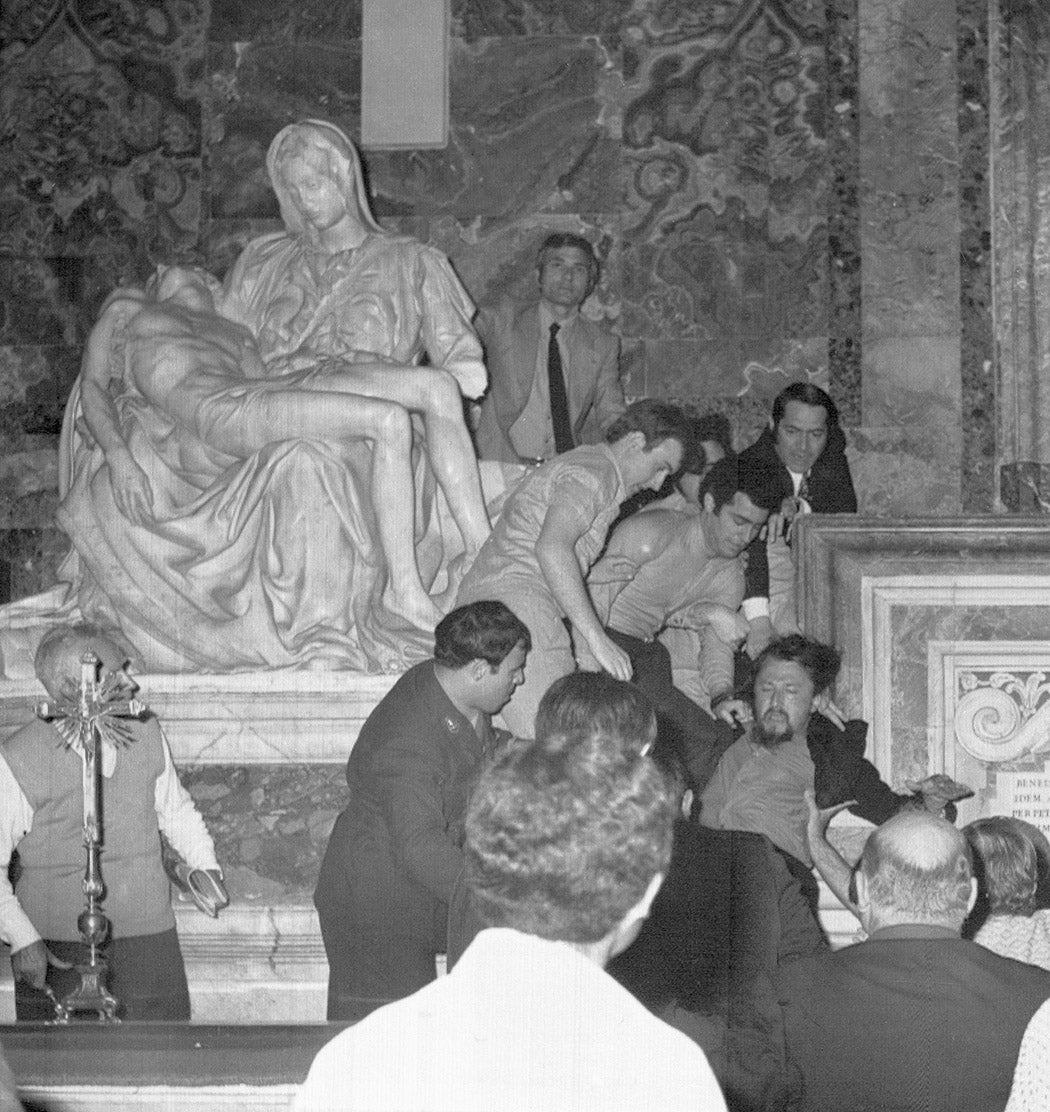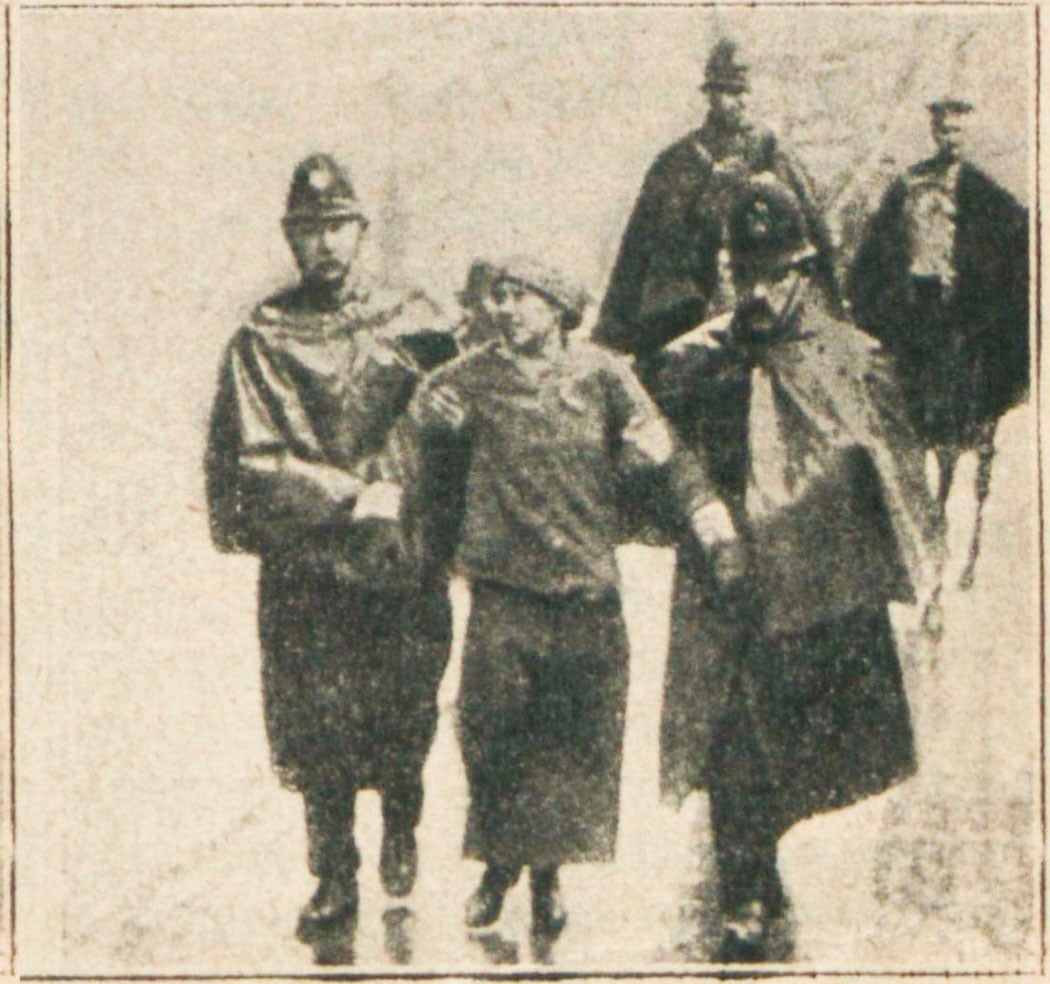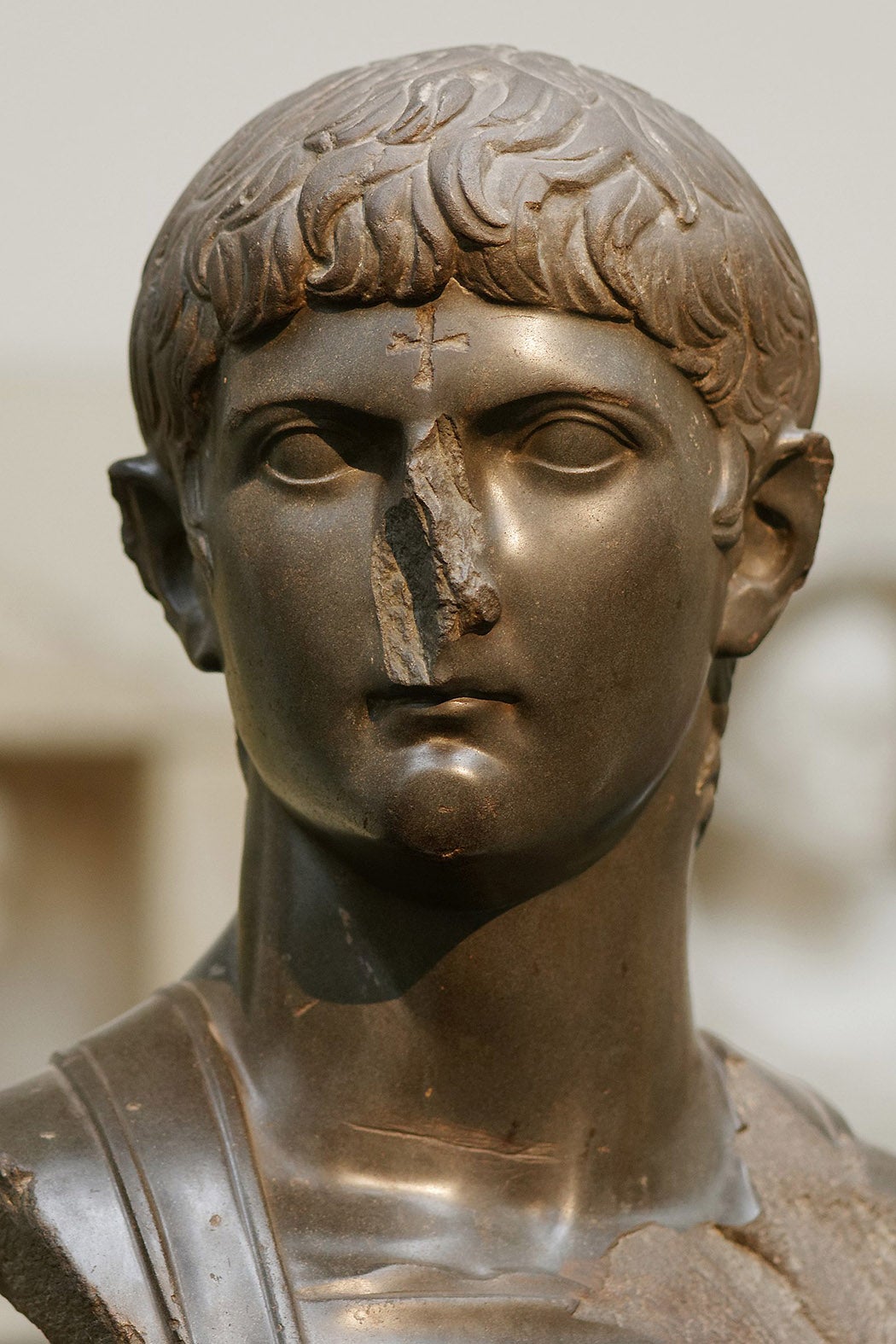What motivates people to attack famous works of art?
This question has arisen with alarming frequency in recent weeks as climate activists pursue an orchestrated campaign of attacks on some of the world’s greatest masterpieces.
Earlier this year at the Louvre in Paris, a man disguised as an old lady in a wheelchair surprised other visitors by jumping up and smearing cake on the glass-protected Mona Lisa. “Think of the Earth!” he shouted.
We have since witnessed similar publicity stunts by climate activists at museums throughout Europe and elsewhere. The artworks targeted include paintings by Leonardo da Vinci, Botticelli, van Gogh, Monet, Vermeer, Constable, and most recently, Andy Warhol, whose depictions of Campbell’s soup cans were targeted in Canberra, Australia.
The modus operandi follows a discernible pattern. Once inside a gallery, activists fling liquid at the targeted canvas before gluing themselves to the wall and performing a rehearsed anti-fossil fuel monologue for a video. In London’s National Gallery, Just Stop Oil activists threw tomato soup at van Gogh’s Sunflowers. In the Hague, an activist attempted to glue his own head to Vermeer’s Girl with a Pearl Earring.
While these attacks attract worldwide publicity and news of them goes viral on social media, they have not endeared the general public to climate activists. Many people consider assaults on museum masterpieces as shocking vandalism. Others fail to see the connection between van Gogh and Big Oil.
Historically, motives for attacks on art have been diverse and complex. Sometimes assailants have been religious fanatics attempting to destroy a “forbidden image.” In other instances, attackers are “offended” by a picture, often due to its troubling eroticism. Frequently, those who attack works of art are considered unstable.

In 1972, an Australian visiting Rome took a hammer to Michelangelo’s famous Pietà sculpture showing the body of Christ in the arms of the Virgin Mary. The assailant, called Laszlo Toth, declared, “I am Jesus Christ risen from the dead!” He was arrested and committed to an asylum.
In most cases, such attacks are commanded not by mental instability but by a political ideology of revolt. Today’s climate activists are motivated by a clear and determined logic of protest.
But why target famous works in the world’s most prestigious galleries?
The tactics adopted by Just Stop Oil are taken out of the suffragist playbook from more than a century ago. Before the First World War, suffragists launched a series of attacks on artworks to bring public attention to the cause of women’s voting rights.

The most infamous incident occurred at London’s National Gallery in March 1914. Mary Richardson walked into the gallery, pulled out a small meat cleaver concealed in her sleeve, and slashed Velázquez’s Rokeby Venus, which depicted the naked goddess gazing languorously at her own image in a mirror held by Cupid.
Over the next few months, British suffragists attacked fourteen paintings, including Giovanni Bellini’s The Agony in the Garden at the National Gallery and John Singer Sargent’s portrait of novelist Henry James hanging in the Royal Academy.
By targeting highly visible art works, suffragists were assailing the powerful elites who financed the acquisition of prized masterpieces. In the eyes of the activists, these famous paintings were fetishized objects that satisfied establishment tastes. By mutilating these canvases, they were striking a blow at the British establishment which they blamed for depriving women of the right to vote.
Weekly Newsletter
The suffragists knew that attacking works of art was certain to attract public attention. They also interrupted a gala opera performance of Joan of Arc at London’s Covent Garden, where King George V was in attendance.
Like the suffragists, the goal of climate activists is to attract maximum publicity and push a wider agenda that they believe will prevail in the long term. By targeting famous galleries and museums—like the Louvre and the National Gallery of Art, whose exhibitions have historically been sponsored by Big Oil—the activists are attacking the capitalist establishment responsible for the planet’s destruction.
Protest groups such as Extinction Rebellion (ER) have, like Just Stop Oil, reached back into history for inspiration. ER protestors often dress in elaborate costumes, such as red robes with their faces powdered white. Others wear outlandish masks, such as fish heads for their protest street performances.
These protest aesthetics evoke the Dada movement’s predilection a century ago for costumes and performance techniques. Alfred Jarry, for instance, used theater of the absurd to protest against the nationalist and bourgeois values that were leading inexorably to the apocalypse of the First World War. Famous for his signed urinal as art object, Marcel Duchamp declared that “destruction is also creation.” And, Man Ray called one of his pieces Object to Be Destroyed, an explicit call if ever there was one.
Indeed, the apocalypse is another common theme that links the Dadaist and climate activists. Just Stop Oil and Extinction Rebellion activists believe they are saving the planet from climate catastrophe. Other names of activist groups on the continent evoke this quasi-religious fervour. There is “Last Generation,” whose activists threw mashed potatoes at a Monet painting in Potsdam, Germany. And in France, “Dernière Rénovation” claims it will soon be too late to save the planet.
In late October, an activist at a performance of Mozart’s The Magic Flute at the Paris Opera marched on stage and warned of the climate apocalypse. Three days later, another French activist scaled the Pantheon wearing a shirt that warned, “We have 876 days left.”
Zealous millenarianism has characterized religious sects for centuries. The central doctrine of this end-of-time theology is the Last Judgment and a belief in divine justice. Millenarian cults are regarded as radical and threatening because their belief in divine justice heralds an end to existing power structures and the coming of a promised supernatural kingdom of peace.
Early Christians, much like climate activists today, were belligerently iconoclastic in their revolt against the pagan power structure of the Romans. Christian zealots attacked and toppled Roman temples and idols. Romans regarded Christians as deranged zealots, just as many people today regard climate activists as exasperating fanatics.

Some of the mutilated Greco-Roman statues displayed in museums today were disfigured by these early Christian fanatics. The Elgin Marbles in the British Museum, for example, hail from the Parthenon in Athens, damage to which is generally believed to have been caused by wars and the ravages of time. Yet there is strong evidence that Christians attacked and mutilated the Greek temple statues in the fourth and fifth centuries, before the temple was converted to a church. Another cherished artifact in the British Museum is a bust of the Roman general Germanicus Caesar, the father of the emperor Caligula. It shows clear evidence of mutilation at the hands of Christians. Germanicus’s nose is hacked off; a cross is etched on his forehead.
Christian zealots in Roman times, like today’s climate activists, were fearless in the face of authority. They openly declared their hatred of Rome, which they referred to as “Babylon,” according to many scholars. When committing acts of vandalism, they wanted to be arrested and punished. At trial they spoke only to declare their faith: “Christianus sum.” (“I am a Christian.”). Many embraced execution as martyrdom. Some were “voluntary martyrs” who deliberately provoked the Romans to hasten their own death.
If the religious connection to modern-day climate activism seems a stretch, there is evidence that today’s activists are commanded by quasi-religious devotion to their cause.
At an Extinction Rebellion protest in London’s Oxford Circus in 2019, one XR member was preaching in the unmistakable language of spirituality. “There is nothing greater than oneness,” proclaimed Sarah Zaltash. “There is no God, no H&M, no Piccadilly, none of that is greater than oneness… Hayya ‘ala I-falah. Come to sanctuary. Come to success. Cause that’s how important it is to stay safe… Hayya ‘ala s-salah. Which means come celebrate. Come worship. Come pray.”
When the police showed up, Zaltash shouted at them, “We’re in the middle of prayer!”
Other Extinction Rebellion rituals make their connection to Christianity explicit. In 2019 on the day of the Last Supper, commemorating Christ’s washing the feet of his disciples, Extinction Rebellion organized a ceremonial foot-washing in London for protestors to “serve, nurture and bless activists.”
“It is no wonder that alongside the movement’s political objectives is the nurturing of the ‘skill’ of broken heartedness,” Stefan Skrimshire, a professor of theology at the University of Leeds, has observed about Extinction Rebellion.
This requires forms of protest that can also facilitate a kind of witness for which acts of liturgy and prayer could appear, to some, the most appropriate vehicles. This goes not only for grief but also for joy, since the protests are also exuberant acts of celebration through music, dance and theatre, providing a chance to reconnect with others and express gratitude for creation.
Cullan Joyce at the Catholic Theological College in Melbourne, highlights the connection between Extinction Rebellion and early Christianity around the theme of an apocalypse: “Elements of New Testament Christianity provide a context for understanding XR as a response to an apocalypse.” Extinction Rebellion even enjoys official support from some religions and has a Christian wing called “Christian Climate Action.” In Britain, some Anglican bishops have urged congregants to support the XR movement.
Other church figures are more skeptical. In an article titled “Extinction Rebellion, the New Religion with Greta as Its Saint,” Church of Scotland minister W. C. Campbell-Jack observes:
In this quasi-religion, science is overshadowed by the spiritual fervor of the well-meaning middle class who at last have found a fashionable cause they can follow. . . . Not having faith in the God of the Bible, they have substituted a fundamental belief in the morality of their cause which gainsays rational discussion. The Extinction elect who are so blindly assured of the righteousness of their faith even have a secular saint whom they idolize, one upon whose every word they hang, whose condemnations are received as blessings.
The “saint” is teenaged activist Greta Thunberg, who attracted global media attention for a 2019 speech at the United Nations where she warned, “Time is running out, but it’s not too late.”
At a time when politics has become a new form of religion, it is not surprising that groups such as Just Stop Oil and Extinction Rebellion have mobilized their most fervent devotees with apocalyptic language of the religion and the Last Judgment. In their eyes, paintings by van Gogh and Vermeer are the fetishized idols of a destructive capitalist world order that needs to be dismantled in the name of global salvation.
Editor’s note: This piece is adapted from Matthew Fraser’s book, Monumental Fury: The History of Iconoclasm and the Future of Our Past.







